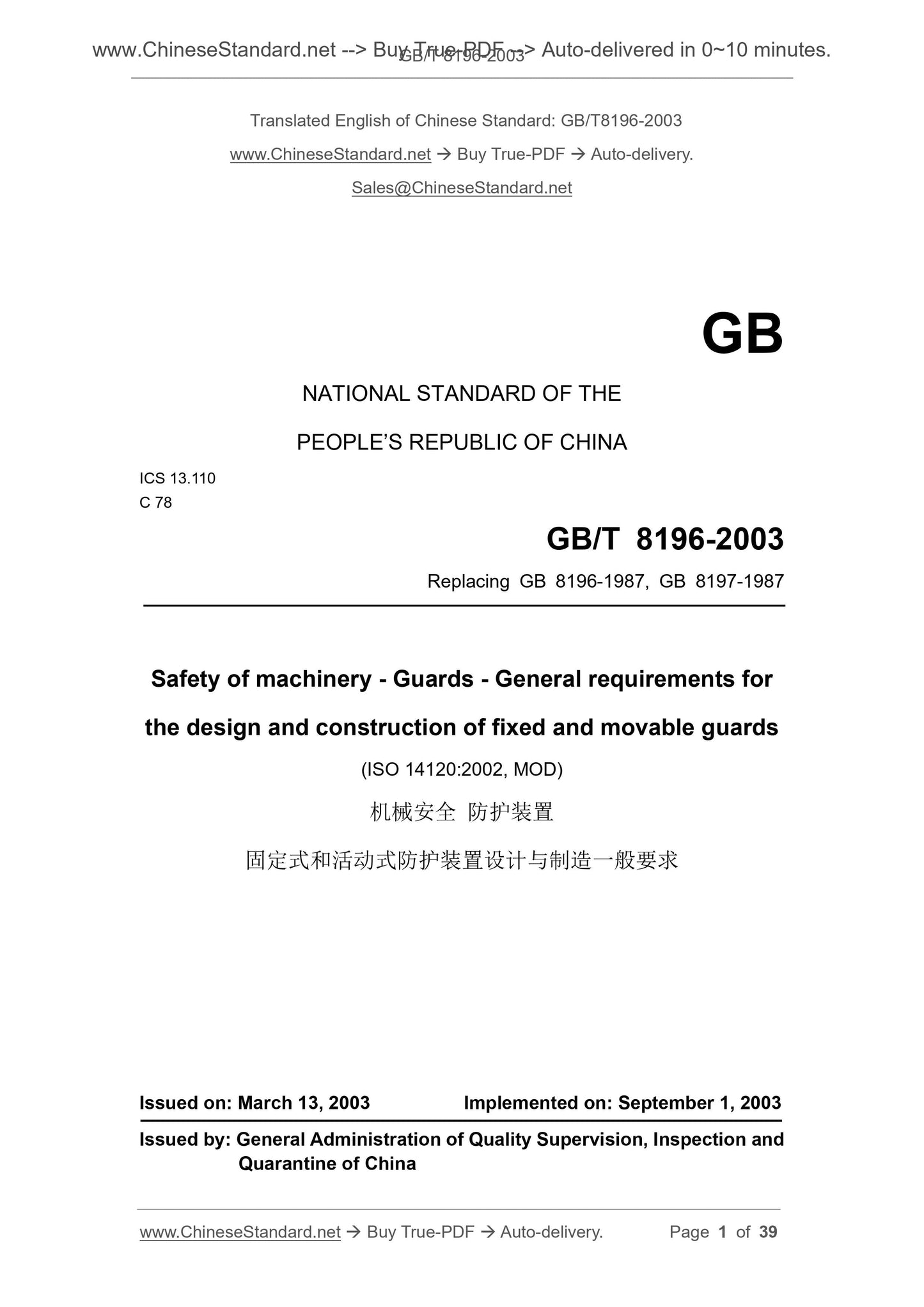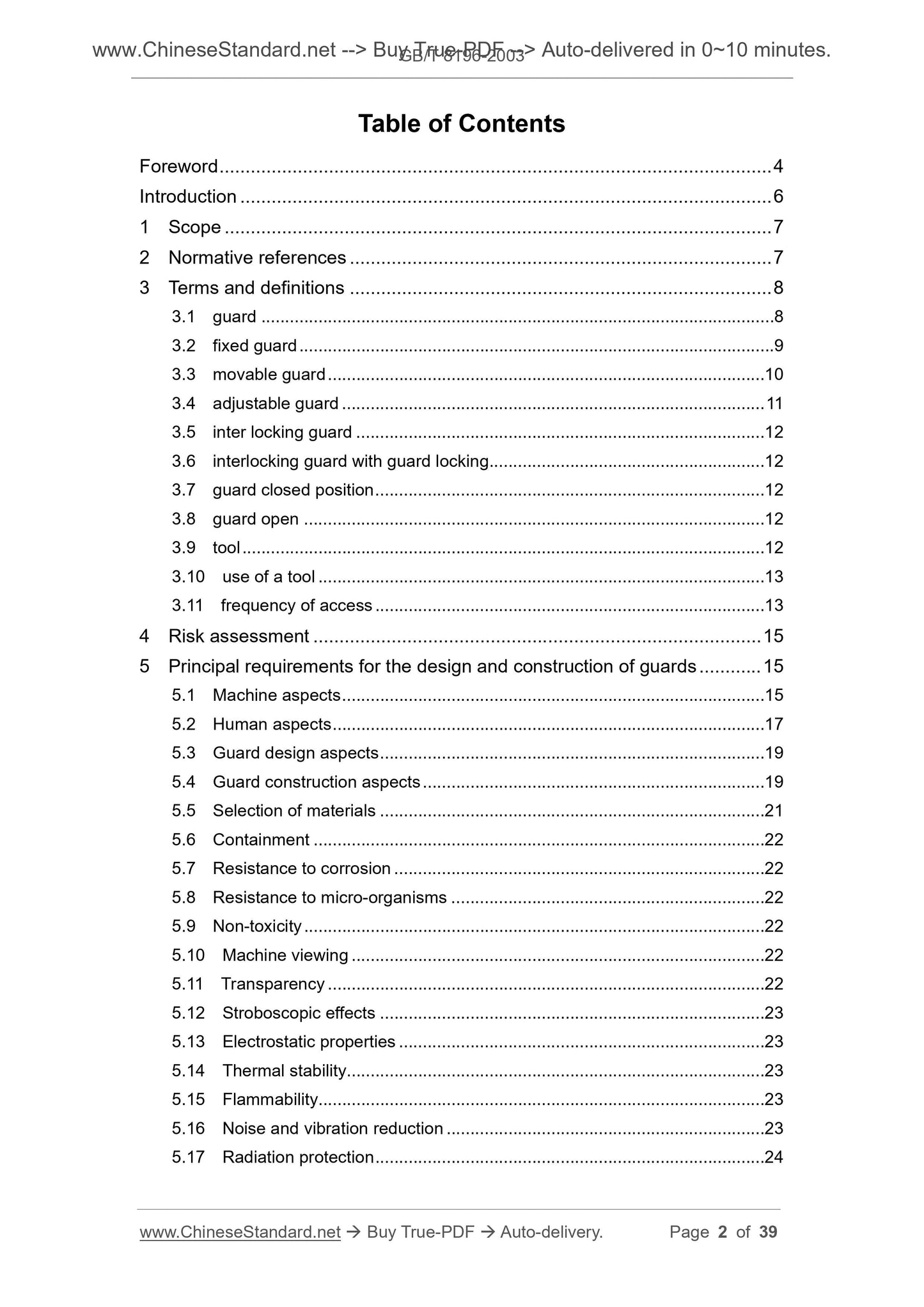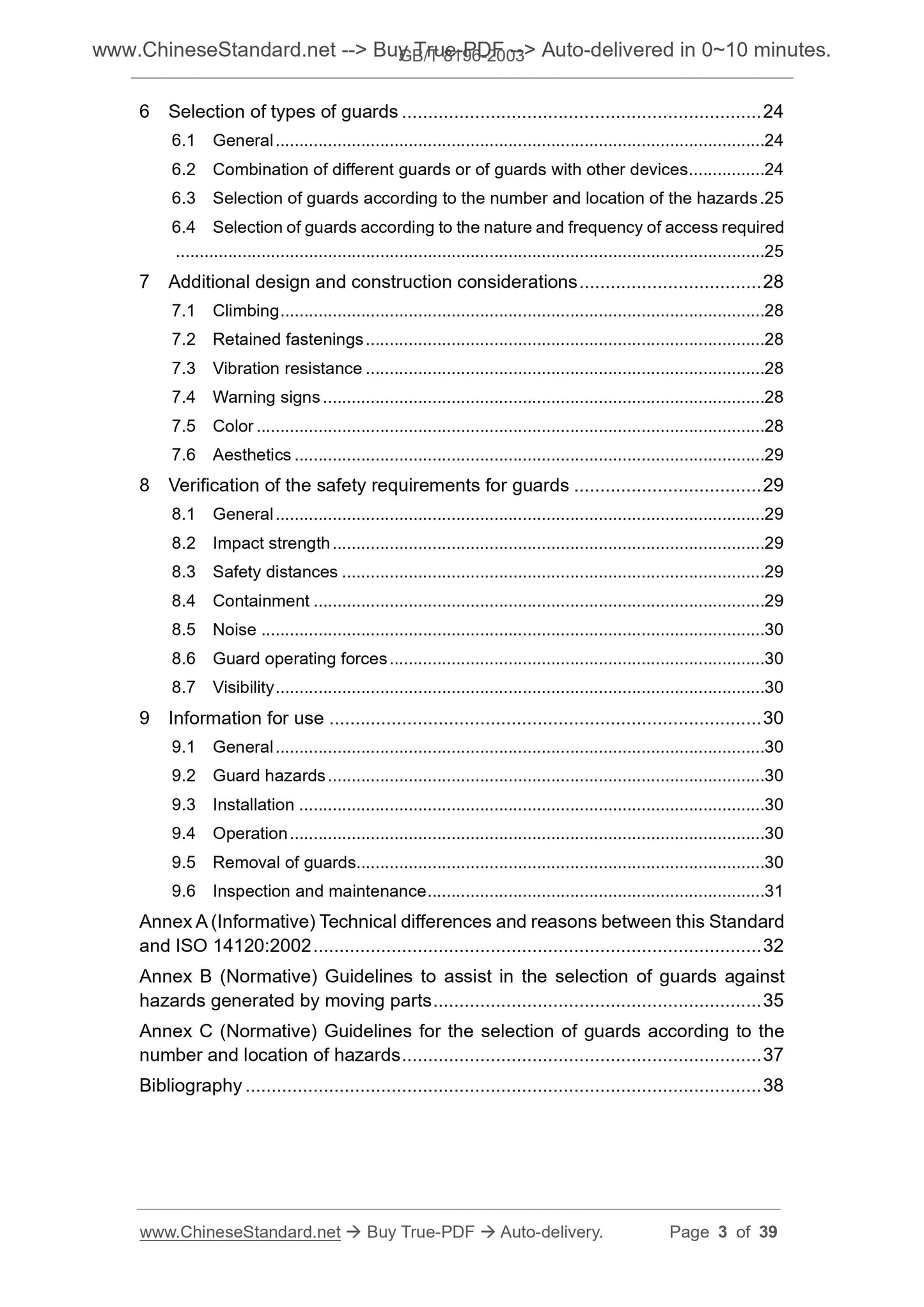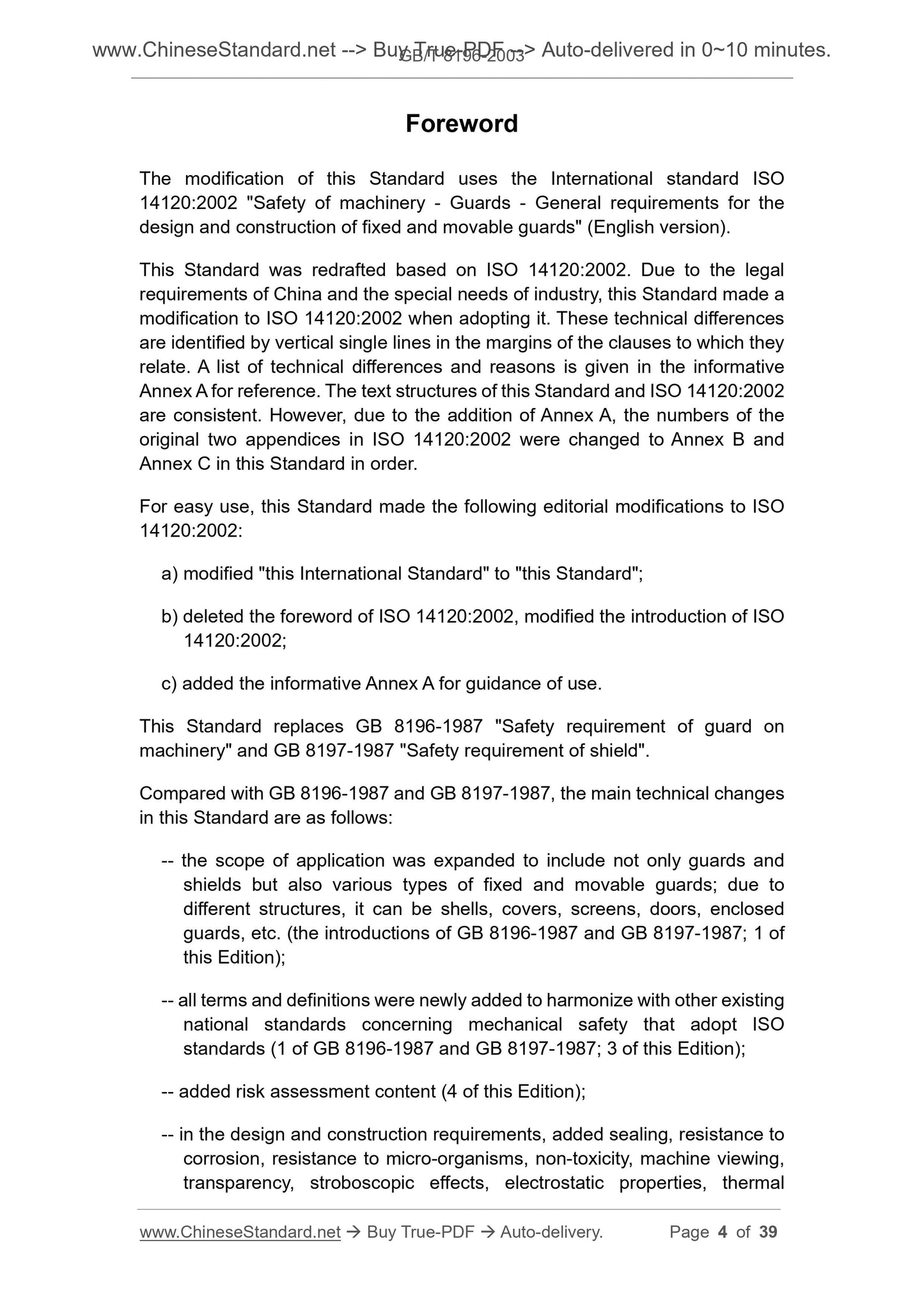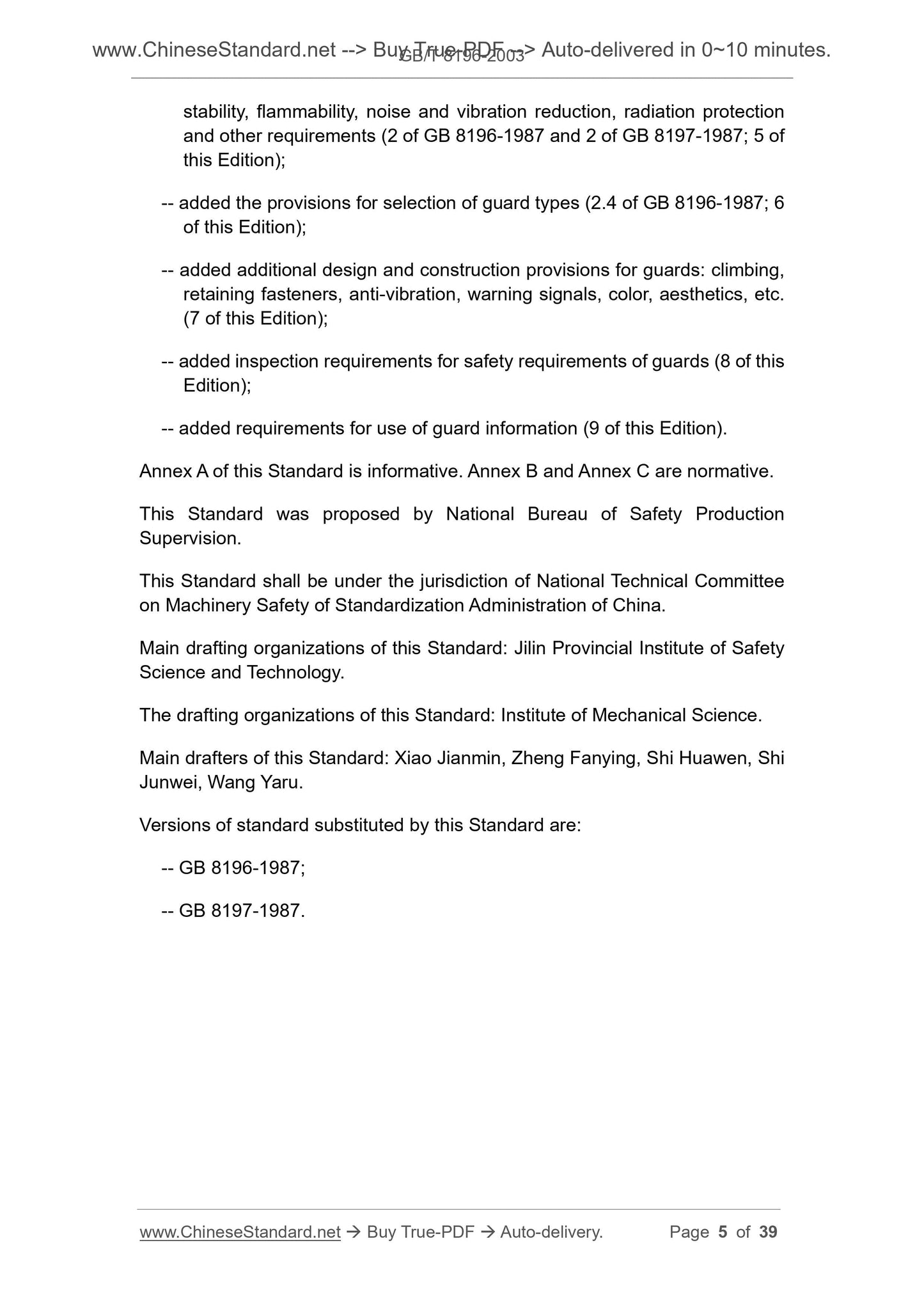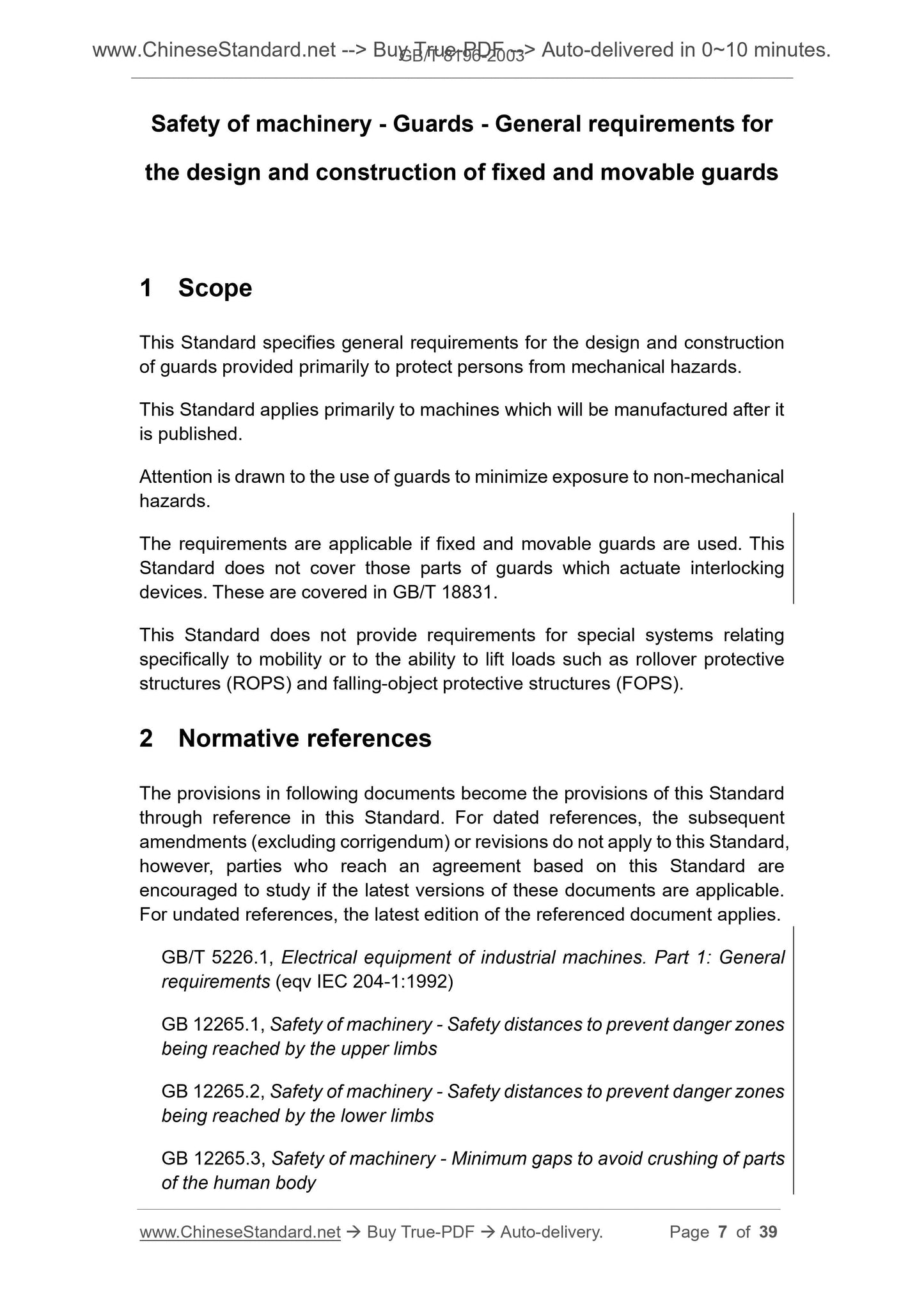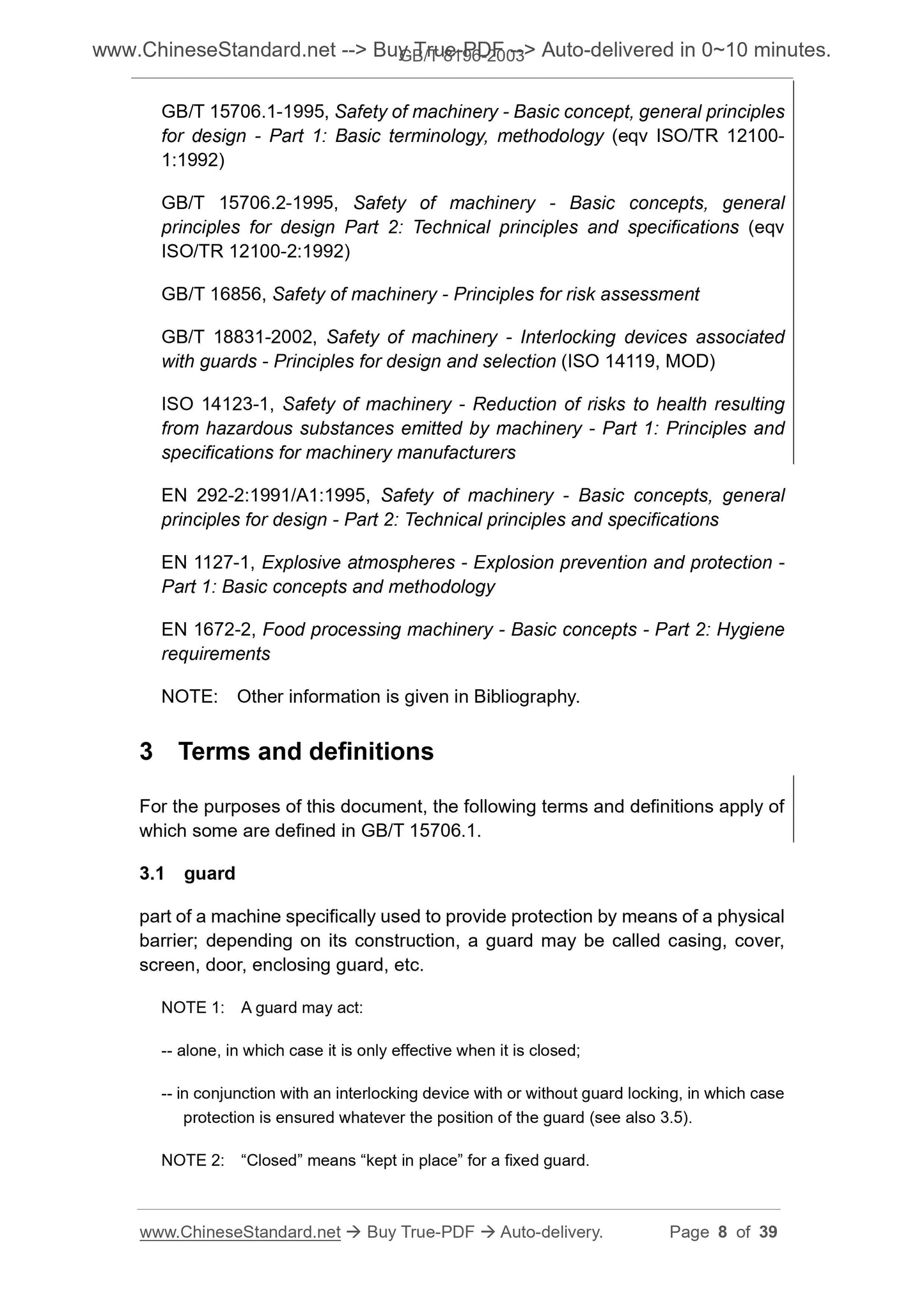1
/
of
7
PayPal, credit cards. Download editable-PDF and invoice in 1 second!
GB/T 8196-2003 English PDF (GB/T8196-2003)
GB/T 8196-2003 English PDF (GB/T8196-2003)
Regular price
$150.00
Regular price
Sale price
$150.00
Unit price
/
per
Shipping calculated at checkout.
Couldn't load pickup availability
GB/T 8196-2003: Safety of machinery -- Guards -- General requirements for the design and construction of fixed and movable guards
Delivery: 9 seconds. Download (and Email) true-PDF + Invoice.Get Quotation: Click GB/T 8196-2003 (Self-service in 1-minute)
Newer / historical versions: GB/T 8196-2003
Preview True-PDF
Scope
This Standard specifies general requirements for the design and constructionof guards provided primarily to protect persons from mechanical hazards.
This Standard applies primarily to machines which will be manufactured after it
is published.
Attention is drawn to the use of guards to minimize exposure to non-mechanical
hazards.
The requirements are applicable if fixed and movable guards are used. This
Standard does not cover those parts of guards which actuate interlocking
devices. These are covered in GB/T 18831.
This Standard does not provide requirements for special systems relating
specifically to mobility or to the ability to lift loads such as rollover protective
structures (ROPS) and falling-object protective structures (FOPS).
Basic Data
| Standard ID | GB/T 8196-2003 (GB/T8196-2003) |
| Description (Translated English) | Safety of machinery. Guards. General requirements for the design and construction of fixed and movable guards |
| Sector / Industry | National Standard (Recommended) |
| Classification of Chinese Standard | C78 |
| Classification of International Standard | 13.110 |
| Word Count Estimation | 24,248 |
| Date of Issue | 2003-03-13 |
| Date of Implementation | 2003-09-01 |
| Older Standard (superseded by this standard) | GB 8196-1987; GB 8197-1987 |
| Quoted Standard | GB/T 5226.1 |
| Adopted Standard | ISO 14120-2002, MOD |
| Issuing agency(ies) | General Administration of Quality Supervision, Inspection and Quarantine of the People Republic of China |
| Summary | This standard specifies the mainly used to protect personnel from injury mechanical hazard protection device design and manufacture of general requirements. This standard applies to this standard after the release of manufacturing machines. Note the use of protective devices to make non-mechanical hazards minimized. Requirements of this standard apply to fixed and movable guards. This standard does not apply to protective devices actuated interlock those parts. Interlock device consists of GB/T 18831 requirements. This standard does not elevate the material to have the ability to move and proprietary systems, such as rollover protective structure (PUPS) and falling object protective structures (FOPS) request. |
Share
